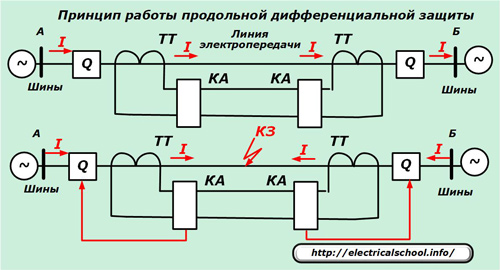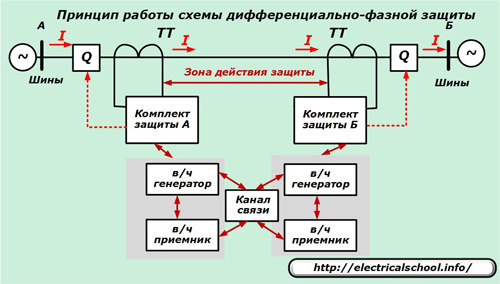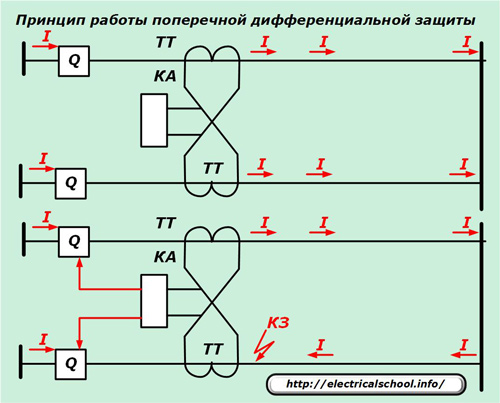Differential protection
Purpose: protection of electrical objects from emergency currents occurring in the controlled area, with an absolute degree of selectivity without time delay.
Principle of operation of differential protection
The measuring complex controls a differential body consisting of current transformers and relays, continuously monitoring the direction of the currents in different sections and triggered when they change.
In the rated mode of operation, the load current flows from the generator end to the consumers and is unidirectional along the entire line. It is monitored and taken into account by measuring relays. If a short circuit occurs in the controlled area, currents begin to feed it from all sides. At the end of the consumer line, the current reverses direction.
This is taken into account by the differential element: it detects and triggers the trip protection logic. Dif protections work on two different principles:
1. longitudinal;
2. transverse.
Longitudinal protection
Used for power lines. Instrument current transformers and relays are installed at the ends of the line in various substations.Current circuits are connected by long cable lines.

For longitudinal differential protection, the measuring current relay is connected so that the current vectors coming from the measuring transformers are fed to the winding in the opposite direction. In this case, with the nominal mode of operation or the occurrence of an external short circuit outside the controlled zone, the current vectors will be mutually compensated and destroyed on the winding. There will be no triggers.
When a short circuit occurs inside the line, currents begin to flow through the coil of the current relay. It works.
The more promising high-frequency differential protections (DFZ, BCHB, etc.) use the same principle, but the connection between the ends of the lines to compare the directions of the currents on them is carried out through communication channels due to the transmission of high-frequency pulses.

Cross protection
It is designed for objects located in the same substation, for example, power transformers, engine blocks, generators, etc.

Measuring current transformers operate at the same substation, but at different connections of the protected object. The winding of the current relay is also connected against the direction of the line current vectors. Otherwise, the lateral differential protection repeats the principle of operation of the longitudinal one.
For more details on the different types of differential protection see here:
Differential protection of the longitudinal line
